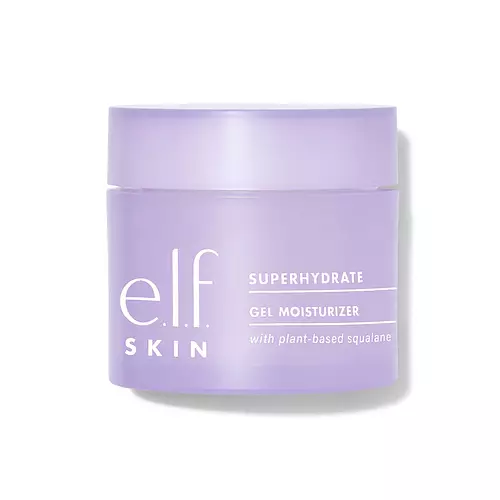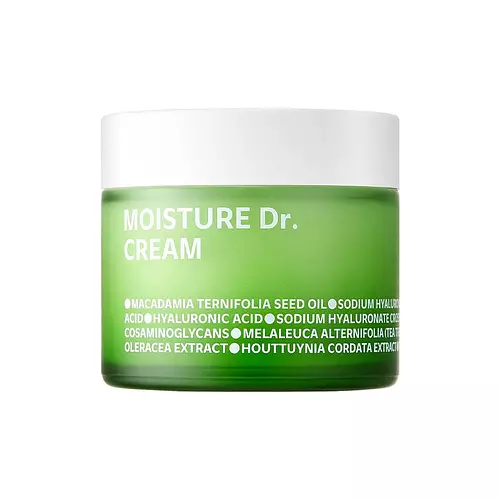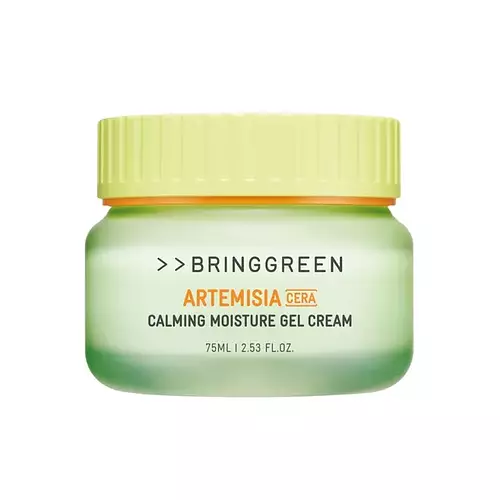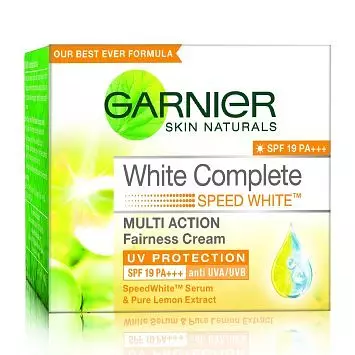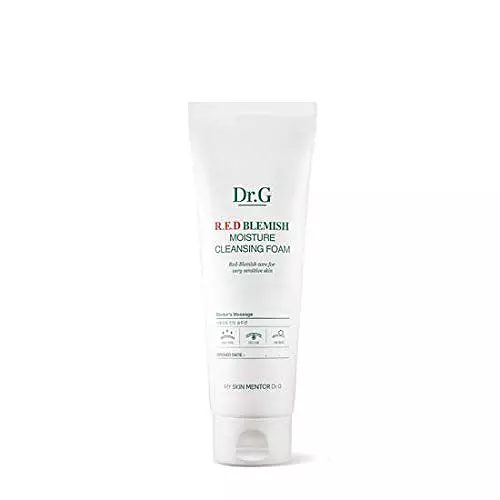Updated on August 08, 2023
Overview
Cool Features
They both contain Vitamin E
Suited For
They're both likely to be good for fighting acne, anti aging, dry skin and brightening skin
Free From
They both do not contain any common allergens, fragrances, oils or sulfates
What's Inside
They both contain silicones
We independently verify ingredients, and our claims are backed by peer-reviewed research. Spot a product that needs an update? Let us know.
Ingredient Info
Rohto Mentholatum Skin Aqua UV Super Moisture Milk SPF50+ PA++++ 34 ingredients
Dr.G R.E.D Blemish Clear Soothing Cream 37 ingredients
At a glance
Click on any of the items below to learn more
Rohto Mentholatum Skin Aqua UV Super Moisture Milk SPF50+ PA++++ 34 ingredients
Dr.G R.E.D Blemish Clear Soothing Cream 37 ingredients
Notable Ingredients
This product contains 2 ingredients that may have this attribute:
This product contains 2 ingredients that may have this attribute:
This product contains 1 ingredient that may have this attribute:
This product contains 3 ingredients that may have this attribute:
This product contains 2 ingredients that may have this attribute:
Benefits
This product contains 1 ingredient that may have this attribute:
This product contains 1 ingredient that may have this attribute:
This product contains 1 ingredient that may have this attribute:
This product contains 2 ingredients that may have this attribute:
Concerns
This product contains 1 ingredient that may have this attribute:
This product contains 1 ingredient that may have this attribute:
This product contains 2 ingredients that may have this attribute:
This product contains 1 ingredient that may have this attribute:
This product contains 3 ingredients that may have this attribute:
Notable Ingredients
This product contains 1 ingredient that may have this attribute:
This product contains 1 ingredient that may have this attribute:
Benefits
This product contains 2 ingredients that may have this attribute:
This product contains 1 ingredient that may have this attribute:
This product contains 5 ingredients that may have this attribute:
This product contains 4 ingredients that may have this attribute:
This product contains 1 ingredient that may have this attribute:
This product contains 1 ingredient that may have this attribute:
This product contains 2 ingredients that may have this attribute:
This product contains 2 ingredients that may have this attribute:
This product contains 1 ingredient that may have this attribute:
This product contains 3 ingredients that may have this attribute:
Concerns
This product contains 1 ingredient that may have this attribute:
Ingredients Side-by-side
Ingredients Explained
These ingredients are found in both products.
Ingredients higher up in an ingredient list are typically present in a larger amount.
Water. It's the most common cosmetic ingredient of all. You'll usually see it at the top of ingredient lists, meaning that it makes up the largest part of the product.
So why is it so popular? Water most often acts as a solvent - this means that it helps dissolve other ingredients into the formulation.
You'll also recognize water as that liquid we all need to stay alive. If you see this, drink a glass of water. Stay hydrated!
Learn more about WaterButylene Glycol (or BG) is used within cosmetic products for a few different reasons:
- It is a solvent, meaning that it helps to dissolve other ingredients. This also enhances the absorption of the product into one's skin.
- It is a humectant, which means that it helps attract moisture into the skin.
- It helps improve product application.
Overall, Butylene Glycol is a safe and well-rounded ingredient. It is unlikely to irritate skin, and works well with pretty much all other ingredients.
Polymethylsilsesquioxane is a silicone used as a film forming agent.
When applied to the skin, this ingredient creates an invisible film on the surface. This film still allows oxygen to pass through, but prevents moisture from escaping. This can help condition and hydrate the skin. It also leaves a silky feel when applied.
Polymethylsilsesquioxane has not been shown to clog pores. It has been deemed safe to use up to 55%, but most cosmetics use much less.
If you have concerns about using this ingredient, we recommend speaking with a professional.
Learn more about PolymethylsilsesquioxaneGlycerin is already naturally found in your skin. It helps moisturize and protect your skin.
A study from 2016 found glycerin to be more effective as a humectant than AHAs and hyaluronic acid.
As a humectant, it helps the skin stay hydrated by pulling moisture to your skin. The low molecular weight of glycerin allows it to pull moisture into the deeper layers of your skin.
Hydrated skin improves your skin barrier; Your skin barrier helps protect against irritants and bacteria.
Glycerin has also been found to have antimicrobial and antiviral properties. Due to these properties, glycerin is often used in wound and burn treatments.
In cosmetics, glycerin is usually derived from plants such as soybean or palm. However, it can also be sourced from animals, such as tallow or animal fat.
This ingredient is organic, colorless, odorless, and non-toxic.
Glycerin is the name for this ingredient in American English. British English uses Glycerol/Glycerine.
Learn more about GlycerinTocopherol (also known as Vitamin E) is a common antioxidant used to help protect the skin from free-radicals and strengthen the skin barrier. It's also fat soluble - this means our skin is great at absorbing it.
Vitamin E also helps keep your natural skin lipids healthy. Your lipid skin barrier naturally consists of lipids, ceramides, and fatty acids. Vitamin E offers extra protection for your skin’s lipid barrier, keeping your skin healthy and nourished.
Another benefit is a bit of UV protection. Vitamin E helps reduce the damage caused by UVB rays. (It should not replace your sunscreen). Combining it with Vitamin C can decrease sunburned cells and hyperpigmentation after UV exposure.
You might have noticed Vitamin E + C often paired together. This is because it is great at stabilizing Vitamin C. Using the two together helps increase the effectiveness of both ingredients.
There are often claims that Vitamin E can reduce/prevent scarring, but these claims haven't been confirmed by scientific research.
Learn more about TocopherolIngredient Ratings
Here's what our community thinks of the ingredients in these two products.
When to use
Rohto Mentholatum Skin Aqua UV Super Moisture Milk SPF50+ PA++++ 34 ingredients
Dr.G R.E.D Blemish Clear Soothing Cream 37 ingredients


Reviews
Here's what our community thinks
Rohto Mentholatum Skin Aqua UV Super Moisture Milk SPF50+ PA++++ 34 ingredients
itsyogirljeni
The best sunscreen for me!
My skin is very sensitive to sunscreen and this is the only sunscreen that doesn't burn me, or breaking me out, or...
The best sunscreen for me!
My skin is very sensitive to sunscreen and this is the only sunscreen that doesn't burn me, or breaking me out, or itching me!
Very hydrating but not sticky or oily.
lisamj
I’ve used this sunscreen for 3 years and its one of the only products with SPF my skin can tolerate, due to extremely sensitive skin. I can...
I’ve used this sunscreen for 3 years and its one of the only products with SPF my skin can tolerate, due to extremely sensitive skin. I can sometimes feel a little of a sting on my cheekbones if i apply double layers through the day. No cast, super easy to apply, no scent, it doesnt feel sticky like a lot of sunscreens do.
Dr.G R.E.D Blemish Clear Soothing Cream 37 ingredients
euna
HATE it so much. i have oily skin and this made me look so oily that it looks like you could probably deep fry a dozen donuts if you extracted the...
HATE it so much. i have oily skin and this made me look so oily that it looks like you could probably deep fry a dozen donuts if you extracted the oil from my face. this also inflamed my clogged pores and i'm pretty sure it clogged more of my pores.
Rafaela
It hydrates very lightly but it made my skin look "dirty" somehow (?) like a thin film of dirt on my face, slightly reminds me of when you use egg...
It hydrates very lightly but it made my skin look "dirty" somehow (?) like a thin film of dirt on my face, slightly reminds me of when you use egg whites as a face mask but a mild version of it, I also used it on my husband who has hardcore oily and acne prone skin thinking since it's light and watery it would help with the slightly dry areas, it made his face even oiler.







